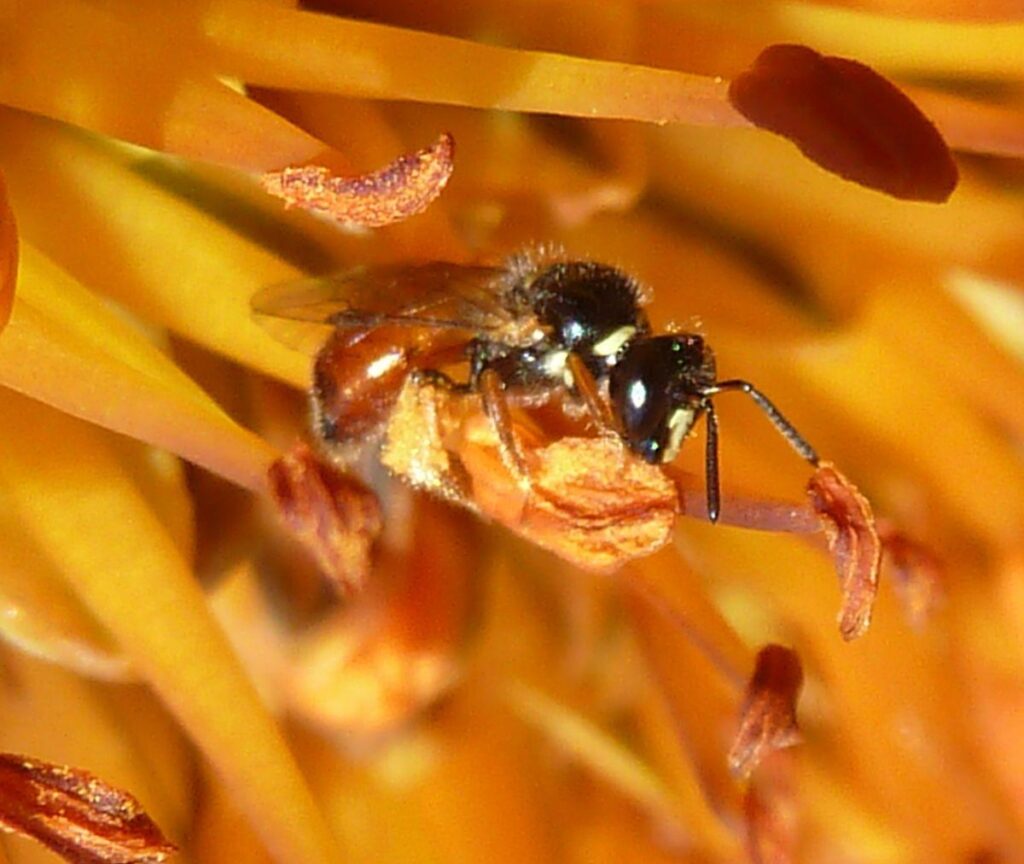A recent study published in Frontiers sheds new light on the neural underpinnings of social behavior in allodapine bees, a group known for their flexible social structures. Researchers have discovered that brain development in these facultatively social insects corresponds closely with their caste roles-workers or queens-rather than the complexities of group living itself. This finding challenges conventional views on how social environments shape brain architecture and offers fresh insights into the evolution of sociality in insects.
Brain Development in Facultatively Social Allodapine Bees Correlates Strongly with Caste Roles
Recent research into facultatively social allodapine bees reveals a nuanced understanding of brain development patterns shaped primarily by caste-specific roles rather than mere group living. Workers and reproductive individuals demonstrate significant disparities in brain structures linked to their behavioral responsibilities. Neural investment in sensory processing, motor control, and learning centers varies according to the demands of the caste, suggesting evolutionary specialization based on functional necessity rather than social complexity alone.
- Workers: Enhanced development in regions associated with foraging and navigation.
- Reproductives: Greater neural emphasis on reproductive behaviors and in-nest activities.
- Group living: Found to have minimal influence on differential brain growth across caste lines.
| Caste Role | Key Brain Regions Enlarged | Behavioral Implication |
|---|---|---|
| Worker | Optic lobes, Mushroom bodies | Advanced foraging & spatial memory |
| Reproductive | Central complex | Reproductive signaling & nest maintenance |
| Solitary | Minimal enlargement | Basic survival functions |
Insights into Neural Adaptations Reveal Caste-Driven Brain Variation Over Group Living Influence
Recent research into the brain plasticity of allodapine bees has uncovered a fascinating differentiation in neural adaptation driven primarily by caste roles rather than the complexity of group living. Despite living in facultatively social groups, the study reveals that workers and queens exhibit distinctive brain development trajectories, emphasizing the biological underpinnings linked to their social functions. Key neural variations include disparities in mushroom body size, which correlate strongly with caste-specific behaviors such as foraging or reproduction, but show minimal influence from social group size or collective living conditions.
This pioneering insight challenges previous assumptions that social complexity invariably drives neural elaboration. Instead, it proposes that intrinsic caste demands hold a more significant evolutionary weight in shaping brain morphology. The implications for understanding the cognitive ecology of eusocial insects are profound, suggesting that selection pressures targeted at individual roles can override those related to group dynamics. Below is a summary of the core findings highlighting these divergences:
- Worker Brains: Enhanced sensory integration regions to facilitate active foraging.
- Queen Brains: Dominant reproductive centers with streamlined sensory processing.
- Group Living Impact: Negligible contribution to brain size or structure changes.
| Caste | Mushroom Body Volume | Behavioral Role |
|---|---|---|
| Worker | High | Foraging & Defense |
| Queen | Moderate | Reproduction & Colony Regulation |
Recommendations for Future Research on Social Behavior and Neuroplasticity in Allodapine Bees
Future investigations should prioritize multidisciplinary approaches that integrate behavioral assays with advanced neuroimaging techniques to unravel the precise mechanisms of neuroplasticity in allodapine bees. Particularly, expanding research to examine how environmental variables and social complexity dynamically influence brain remodeling could illuminate the subtle interplays often masked in facultatively social species. Emphasis on longitudinal studies tracking individual development from solitary to social phases may reveal critical periods where neuroplastic changes are most pronounced, refining our understanding of caste differentiation beyond static group-living models.
Furthermore, there is a compelling need to explore the genetic and epigenetic frameworks underpinning caste-specific brain development. Comparative analyses across related species exhibiting varying degrees of sociality could be instrumental in pinpointing evolutionary conserved patterns versus species-specific adaptations. Researchers are encouraged to leverage these focal points:
- Integration of omics data to correlate gene expression shifts with neural plasticity events.
- Behavioral flexibility assays to map cognitive and social role transitions.
- Manipulative experiments altering social environment to observe brain response mechanisms.
| Research Focus | Methodology | Expected Outcomes | ||||||||
|---|---|---|---|---|---|---|---|---|---|---|
| Neurogenic markers in caste brains | Immunohistochemistry & Imaging | Identification of active plasticity zones | ||||||||
| Social environment perturbations | Behavioral tracking + Neural transcriptional profiling |
Future investigations should prioritize multidisciplinary approaches that integrate behavioral assays with advanced neuroimaging techniques to unravel the precise mechanisms of neuroplasticity in allodapine bees. Particularly, expanding research to examine how environmental variables and social complexity dynamically influence brain remodeling could illuminate the subtle interplays often masked in facultatively social species. Emphasis on longitudinal studies tracking individual development from solitary to social phases may reveal critical periods where neuroplastic changes are most pronounced, refining our understanding of caste differentiation beyond static group-living models. Furthermore, there is a compelling need to explore the genetic and epigenetic frameworks underpinning caste-specific brain development. Comparative analyses across related species exhibiting varying degrees of sociality could be instrumental in pinpointing evolutionary conserved patterns versus species-specific adaptations. Researchers are encouraged to leverage these focal points:
|
